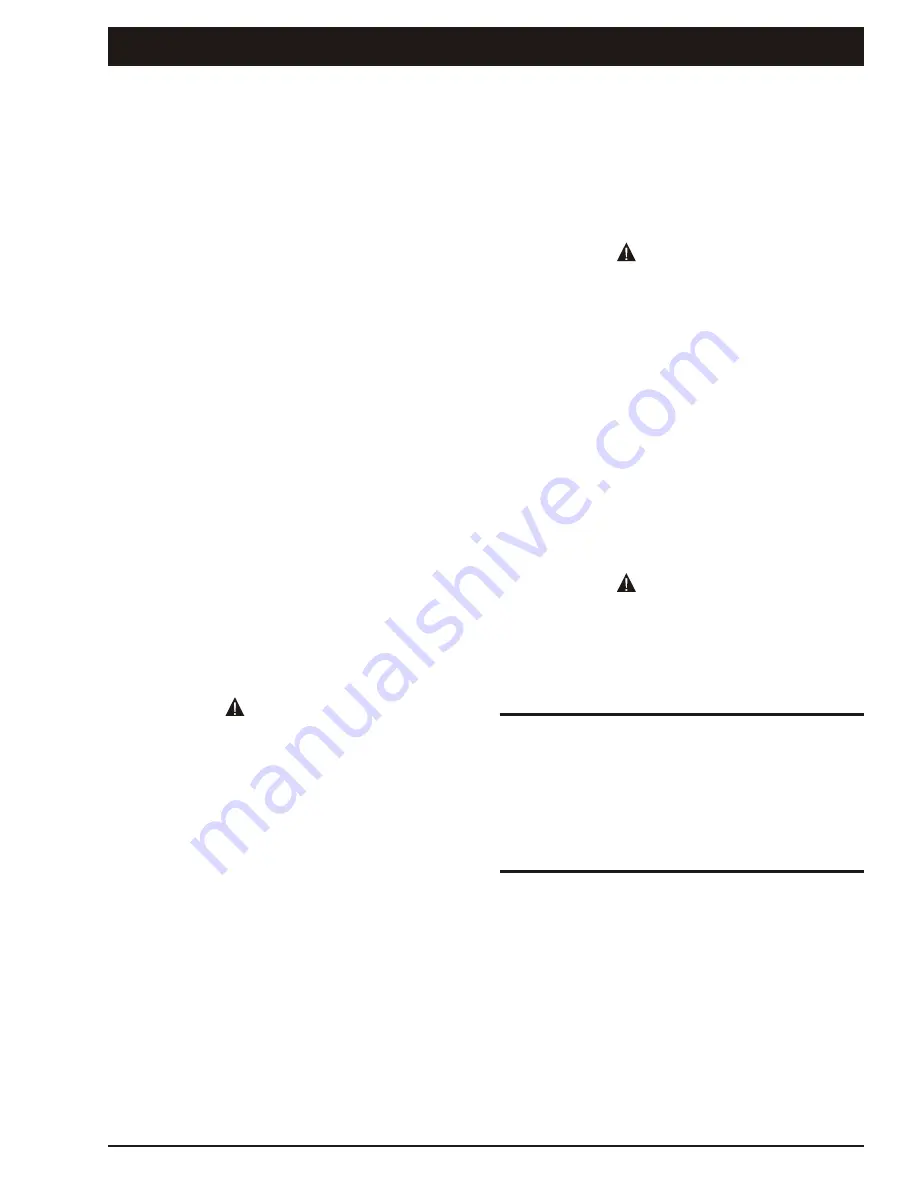
12. Fire Fighting and Chemical Containment
■
Hazardous Components
Snor kel prod ucts may con tain ma te ri als and ob -
jects that po ten tially could be come sig nif i cant fire
or en vi ron men tal haz ards dur ing the life time of the
ma chine.
The ma te ri als in the fol low ing list may be con tained
in the MHP15/44:
1. Antifreeze (ethylene glycol)
2. Battery, lead/acid
3. Diesel fuel
4. Foam in tires
5. Gasoline
6. Hydraulic oil
7. Liquefied petroleum gas
8. Motor oil
The rest of this chap ter lists man u fac tur ers’ in for -
ma tion you will need if you ever have to con trol any
of the above items dur ing an up set or emer gency.
❑
Antifreeze (UN 1993)
☞
Fire extinguishing media:
Dry Chem i cal, foam, or CO
2
.
☞
Special fire fighting procedures:
Wa ter spray may be in ef fec tive on fire but can pro -
tect fire fight ers and cool closed con tain ers. Use
fog noz zles if wa ter is used.
DO NOT enter confined fire space without
full bunker gear. (Helmet with face shield,
bunker coats, gloves & rubber boots). Use a
NIOSH approved positive pressure self
contained breathing apparatus. Keep
container tightly closed. Isolate from
oxidizers, heat and open flame.
☞
Spill or leak:
Small - mop up with ab sor bent ma te rial and trans -
fer to hood.
☞
Waste disposal method:
Small - evap o rate un til all va pors are gone. Dis -
pose of re main der by le gally ap pli ca ble meth ods.
❑
Battery, Lead/Acid (UN 2794)
☞
Extinguishing media:
Dry chem i cal, foam, or CO
2
.
☞
Special fire fighting procedures:
Use pos i tive pres sure, self con tained breath ing ap -
pa ra tus.
☞
Unusual fire and explosion hazards:
Hy dro gen and ox y gen gases are pro duced in the
cells dur ing nor mal bat tery op er a tion.
Hydrogen gas is flammable and oxygen
supports combustion. These gases enter
the air through the vent caps. To avoid the
chance of a fire or explosion, keep sparks
and other sources of ignition away from the
battery.
☞
Spill or leak:
Re move com bus ti ble ma te ri als and all sources of
ig ni tion. Con tain spill by diking with soda ash (so -
dium car
bon
ate) or quick
lime (cal
cium ox
ide).
Cover spill with ei ther chem i cal. Mix well. Make
cer tain mix ture is neu tral then col lect res i due and
place in a drum or other suit able con tainer. Dis -
pose of as haz ard ous waste.
ALWAYS wear acid resistant boots, face
shield, chemical splash goggles, and acid
resistant gloves when handling acid spills or
leaks.
NOTE
DO NOT
release UN-neutralized acid!
☞
Waste disposal method:
Sul fu ric Acid:
Neu tral ize as above for a spill, col -
lect res i due, and place in a drum or suit able con -
tainer. Dis pose of as haz ard ous waste.
NOTE
DO NOT
flush lead contaminated acid to sewer.
☞
Waste disposal method
Bat teries:
Send to lead smelter for rec la ma tion fol -
low ing ap pli ca ble fed eral, state, and lo cal reg u la -
tions.
❑
Diesel Fuel (NA 1993)
☞
Extinguishing media:
Use wa ter spray, dry chem i cal, foam, or CO
2
.
MHP15/44 – 12459A
page 12 - 1
DANGER
DANGER
DANGER
Summary of Contents for MHP15/44
Page 1: ...Engine Powered Gasoline Diesel Battery Electric Operator s Manual P N 12459A May 2005...
Page 19: ...page 2 4 MHP15 44 12459A 2 Safety Devices...
Page 27: ...page 4 2 MHP15 44 12459A 4 Gauges...
Page 29: ...page 5 2 MHP15 44 12459A 5 Automatic Shut offs and Circuit Breakers...
Page 52: ...page 11 2 MHP15 44 12459A 11 Options...
Page 58: ...page 13 2 MHP15 44 12459A 13 Operator s Troubleshooting...
Page 61: ...Working Envelope MHP15 44 3 4 MHP15 44 12459A index 3 Index...
Page 62: ......



























